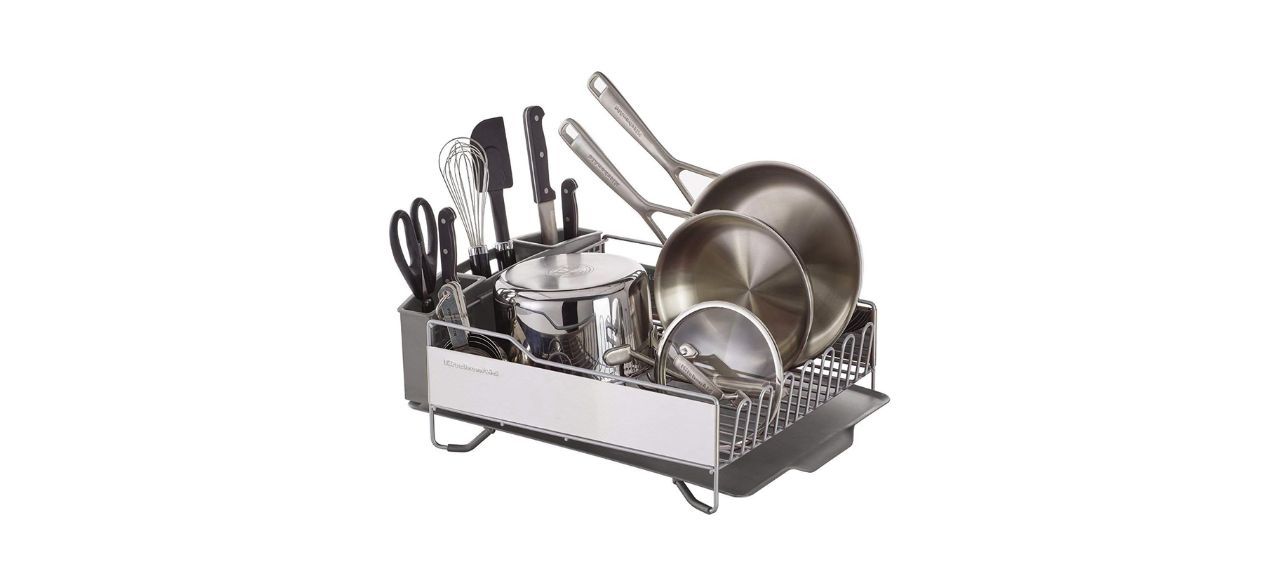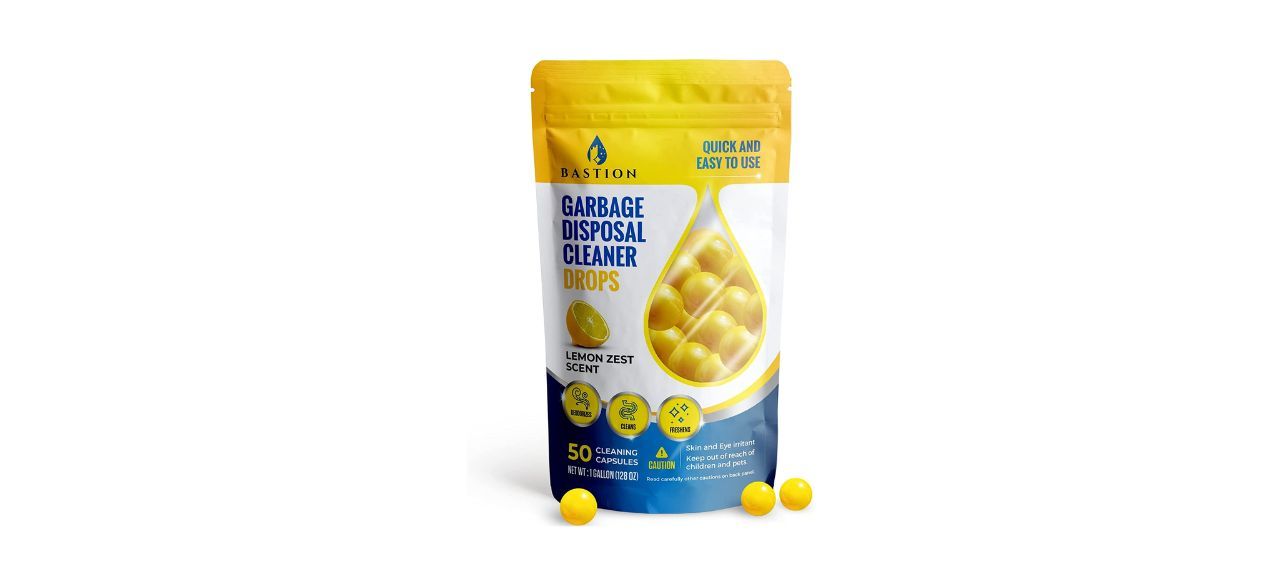Should you rinse your dishes before putting them in the dishwasher?
Sanitizing dishes isn’t as difficult as it sounds and can be completed using just two things: hot water and soap. To sanitize dishes, the suggested temperature for water is 150 degrees to kill bacteria and germs. This is just below the simmering temperature for water and will effectively sanitize them.
As for the soap, unless it’s an antibacterial soap, it usually doesn’t matter what kind you use. According to the Centers for Disease Control and Prevention, any standard dish soap will satisfy when used for sanitation. Dishes can be hand washed or put in the dishwasher to do so.
Shop this article: Dawn Platinum Powerwash Dish Spray, Oxo Good Grips Soap Dispensing Dish Brush, KitchenAid Full-size Dish Rack.
The myth behind sanitizing dishes
There’s a myth that mentions the importance of rinsing dishes before the dishwasher to ensure sanitation. This has been proven false several times over and isn’t something to worry about. If you don’t bathe your plates and cups in hot water before a dishwasher cycle, you’ll still have clean and sanitized dishes upon using just the dishwasher.
The high temperatures that a standard washer uses are enough to eliminate germs. If you just want extra peace of mind, use the highest temperature setting on your dishwasher during the cycle. Modern dishwashers are designed to keep you healthy and safe on the next use of your kitchenware.
Why is it important to remove food from your dishes?
That being said, rinsing your dishes before the dishwasher cycle can certainly improve the quality of your results. Depending on the strength of your washer, big chunks of hardened food particles may not come off as easily as they would if you scrubbed them off before placing them in the dishwasher. It’s advantageous to give your dishes a good scrub if needed in order to have sparkling dishes, but certainly is not necessary in order to sanitize them properly.
Garbage disposals can grind small pieces of food and granules, however, large, hard and fibrous foods will cause clogs and residue over time in the disposal. If you encounter this issue, put one part baking soda and two parts vinegar into the drain and allow 10 minutes for the mixture to set. Rinse with hot water and your buildup should be dissolved.
Why is it important to clean the sink as well?
After placing all dishes in the washer or a drying rack, be sure to clean the sink with either a dedicated cleaning product or a bleach and water solution.
Between food scraps and foodborne illness causing bacteria on the dishes, the sink can quickly become a breeding ground for germs. These germs transfer all around your kitchen by touching the faucet or by leaving sponges in the sink that you’ll use again.
What does need to be sanitized after washing the dishes?
Start with the sponges used if you have hand washed your dishes or were in the sink while you loaded the washer. Damp sponges can be sanitized in the microwave for two minutes on high to eliminate bacteria. Another method is soaking a sponge in a bleach solution for a few minutes and then rinsing thoroughly. An unsanitized sponge will only spread bacteria onto your dishes even with the hottest water used.
Always wash your hands after loading the dishwasher or hand washing your kitchenware. The process of scraping food, touching the sink and other surfaces will leave your hands needing a proper wash as well. Use water, soap and lather your hands for at least 20 seconds before rinsing.
If water from the dishwashing process gets on your countertops or any surface, make sure to clean these with a sanitizing product or bleach solution. The sediment left behind by a soiled dish should be attended to as soon as you are complete with your task.
What you need to buy for sanitizing dishes
Dawn Platinum Powerwash Dish Spray
This is a dish soap spray that ejects foamy suds onto your dish and penetrates grease and grime. It is ideal for soaking pans or for tough remnants left on a dish. This Dawn dish spray does not require scrubbing and only needs to be rinsed after application. It is a bundle with three replacement solution bottles.
Sold by Amazon
Oxo Good Grips Soap Dispensing Dish Brush
This Oxo dish brush features a handle that dispenses soap at the push of a button. Both the durable nylon bristles and exterior scraper are safe for nonstick cookware.
Sold by Amazon
KitchenAid Full-size Dish Rack
This spacious dish-drying rack can accommodate full-sized pots and pans, in addition to smaller kitchenware. The stainless steel dish rack is rust-resistant, with a self-draining board and removable, adjustable flatware caddy.
Sold by Amazon
Bastion Garbage Disposal Cleaner and Deodorizer
This is one of the best garbage disposal cleaners available. The beads release a lemon-fresh scent while breaking down grease trapped in garbage disposals.
Sold by Amazon
Want to shop the best products at the best prices? Check out Daily Deals from BestReviews.
Sign up here to receive the BestReviews weekly newsletter for useful advice on new products and noteworthy deals.
Isabella Acitelli writes for BestReviews. BestReviews has helped millions of consumers simplify their purchasing decisions, saving them time and money.
Copyright 2023 BestReviews, a Nexstar company. All rights reserved.





